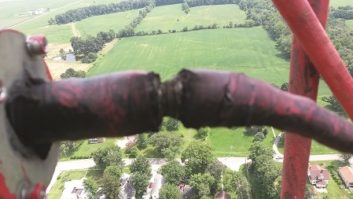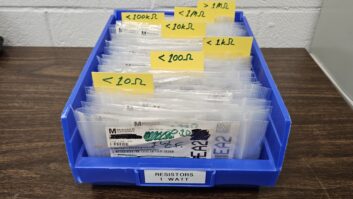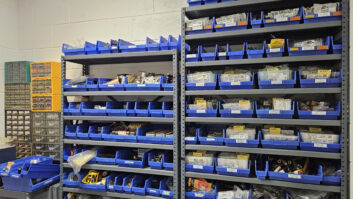Jim Schultz primarily does electrical contract work of all types for broadcast stations and telecom and data facilities. Along the way he has been involved in several transmitter installs.
Jim confesses that radio has always been a first love. For him the relationship started, like many in the biz, with a Knight Kit wireless broadcaster kit when he was 9 years old, six decades ago.
Although he spent a few years on both sides of the mic in medium-market radio, he now has owned his own business as a Connecticut E1 Unlimited Electrical Contractor for almost 40 years. Let that be an encouragement to anyone thinking about starting a contract engineering business!
Jim has been following our discussions about bonding and grounding in Workbench and took note of Wayne Eckert’s drawing of a properly grounded pole in December.
Jim suggests adding a bonding kit where the coax feedline leaves the pole, and a #6 or larger copper bonding conductor from the grounding electrode to the power/telco/ CATV station ground.
Fig. 1 shows a typical ground kit, available from CommScope.
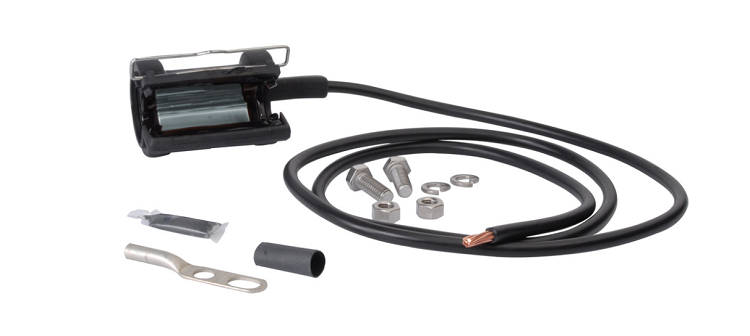
Zap!
Mark Jensen is president of MWB Broadcasting, which owns stations in Nebraska and Hawaii. On a recent Idea Bank conference call, Mark related that an abundance of flies had made working inside his transmitter building unpleasant. Not only that but the flies were getting sucked into the transmitter, causing expensive damage.
Mark’s solution was to install bug zappers inside the buildings. The light attracts and kills the flying insects, keeping them out of electronic equipment. Simple but efficient.
On the same call there was a discussion about keeping weeds down from around your transmitter building or tower.
Terry Barber is with Little Engine Broadcasting, in Montgomery, Ala. He has a billboard company nearby, with scores of old billboards on hand. The sections are of no use to the billboard company, so Terry has placed the old billboard sections on the ground, around his transmitter building, and covered them with gravel.
Since the weeds won’t penetrate the boards, any that do grow amidst the gravel can be pulled easily. Another inexpensive, effective, solution.
X marks the driver
You probably have a screwdriver set with both straight and Phillips drivers. You go to grab one and have to stop and look at the tip to see if it is the one you want.
Mark Peterson, engineer at WCTS(AM), in Plymouth, Minn., offers a solution: Take a Sharpie brand or similar permanent marker and mark the handles of the Phillips drivers. If you store drivers vertically, in slots or loops in the tool case, place a mark on the on the butt end of the driver — an “X” to indicate Phillips or a slash “/” for the straight blade.
Take a minute or two to do this and you’ll never grab the wrong driver again.
We love all these simple, yet useful, reminders.
Who needs a carwash?
Alan Peterson is the national production director for the Radio America Network and a longtime member of the Radio World family.
Our recent discussions about cleaning equipment using a hose or carwash reminded Alan of the time in the early 1990s at WLAD(AM)/WDAQ(FM) in Danbury, Conn., when an oil burner in the basement of the studios malfunctioned and filled the building with greasy smoke and soot.
Professional cleaning crews took care of the general office mess while, but the guidance of the late Tom Osenkowsky, Alan and a few other staffers took care of degreasing the electronic gear.
As Alan related the experience in the pages of Radio World, a reader suggested that a suitable way to clean an ITC triple-deck cart machine was to remove all rubber parts like pinch rollers and rubber feet, and run it through the dishwasher!
Alan fortunately hasn’t had a second shot at a station fire to test the idea, and cart decks have gone the way of the Conestoga wagon, so we can’t report any outcome of the proposed experiment. Perhaps Workbench readers can share one.
Smart water sensors
Jose Luis Bolanos is with Broadcast Services LLC. He attended a Zoom meeting for the Grand Rapids SBE chapter recently on which I spoke.
In the presentation on AoIP, I also mentioned the use of water sensors to protect both studio and transmitter sites from water damage.
Typically, these floods are caused by clogged condensate drains, but roof leaks in seldom-visited sites can be just as costly.
Jose Luis has been using water sensors in facilities as well, but his are battery-powered (Fig. 2).
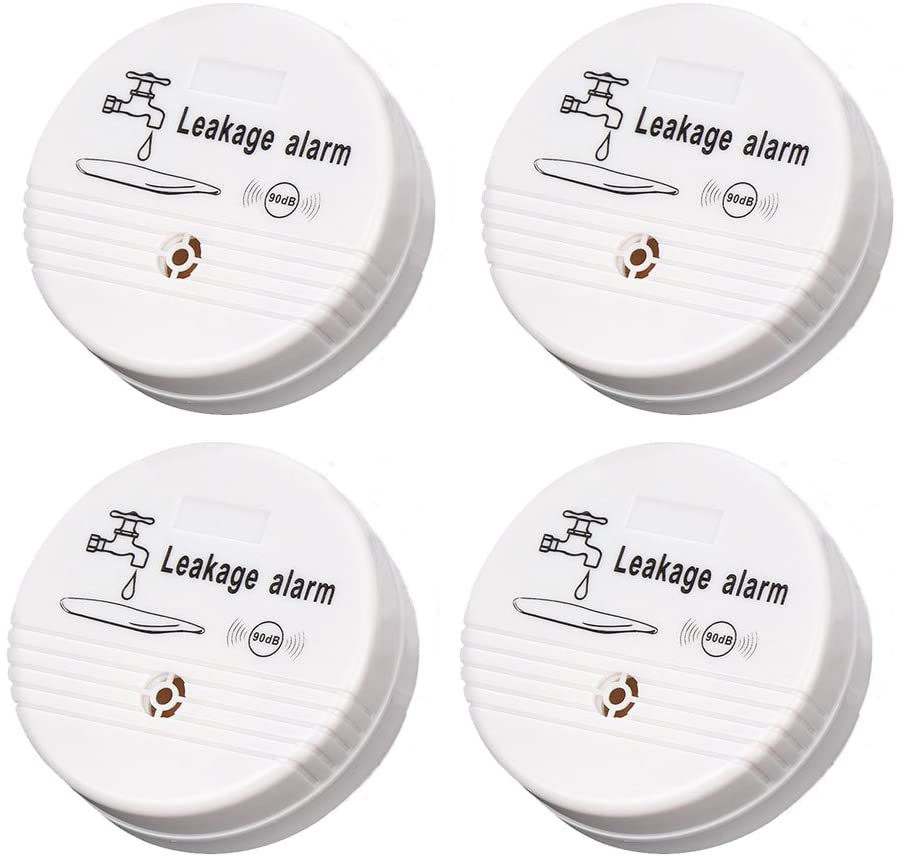
They will wail/beep when they come in contact with water. You’ll find them described at this Amazon link: https://amzn.to/37qSwQD. This set includes four sensors for under $30. Note that batteries are not included.
Jose Luis places the sensors in strategic corners or near AC condensate drain pipes — he had one of those clog once, and it started to drip water inside the transmitter building.
When the alarm starts, he can pick up the noise with a security camera that receives audio or an environmental monitor unit.
Nowadays, you can purchase water sensors that are connected through the internet (like everything else). These versions will send alarms to a smart phone/email.
Here is an Amazon link for these IP sensors, shown in Fig. 3, which cost less than $50 for three and come with batteries: https://amzn.to/3akUTWY.
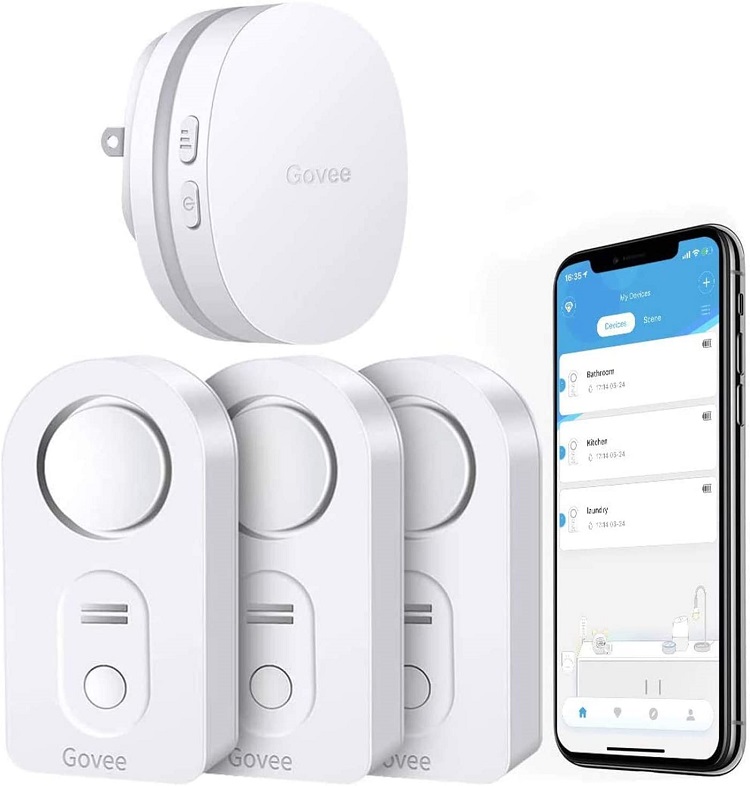
Workbench submissions are encouraged and qualify for SBE Recertification. Email them to [email protected].
John Bisset has spent more than 50 years in the broadcasting industry and is in his 31st year writing Workbench. He handles western U.S. radio sales for the Telos Alliance. He holds CPBE certification with the Society of Broadcast Engineers and is a past recipient of the SBE’s Educator of the Year Award.





